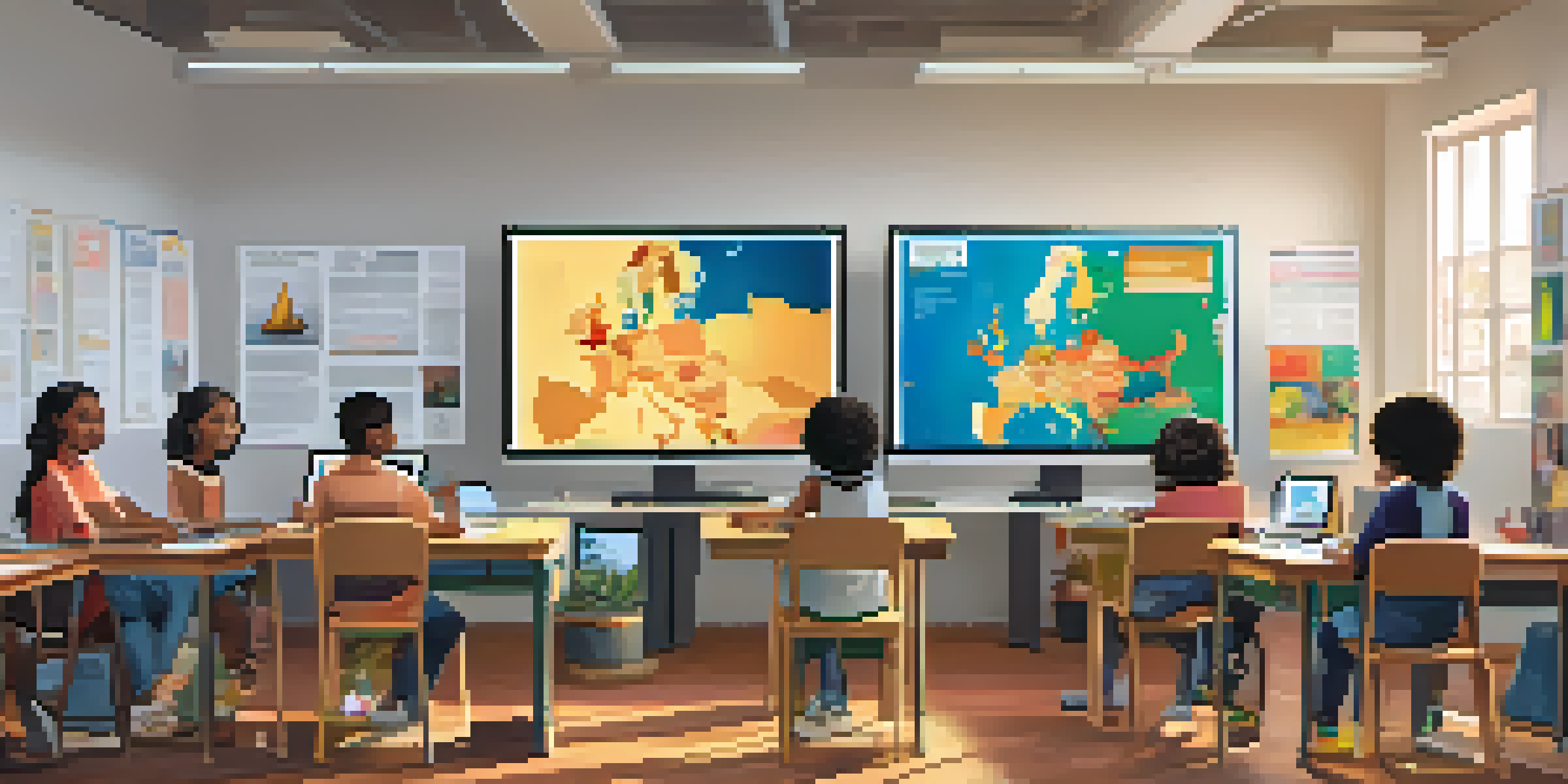Incorporating Diversity in Online Learning Communities

Understanding the Importance of Diversity in Learning
Diversity in online learning communities enriches the educational experience. It brings together individuals from various backgrounds, cultures, and perspectives, creating a vibrant tapestry of ideas. By engaging with different viewpoints, learners can challenge their assumptions and expand their understanding of the world.
Diversity is the one true thing we all have in common. Celebrate it every day.
Moreover, diverse learning environments promote critical thinking and creativity. When students collaborate with peers who have unique experiences, they are more likely to think outside the box and develop innovative solutions. This not only benefits individual learners but also enhances the overall learning community.
Finally, embracing diversity prepares students for the global workforce. In today's interconnected world, employers value individuals who can communicate and collaborate effectively with people from diverse backgrounds. By fostering inclusivity in online learning, educators equip students with the skills they need for success in their careers.
Creating Inclusive Online Learning Environments
To promote diversity, it’s essential to create an inclusive online learning environment. This starts with adopting policies and practices that encourage participation from all students, regardless of their background. Utilizing inclusive language in course materials, for example, can make a significant difference in how students perceive their place within the community.

Technology also plays a crucial role in fostering inclusivity. Platforms that support various accessibility features ensure that all learners can engage with content effectively. By integrating resources such as captions, screen readers, and alternative formats, educators can accommodate diverse learning needs.
Diversity Enriches Learning Experiences
Engaging with diverse perspectives challenges assumptions and enhances critical thinking among learners.
Furthermore, setting clear expectations for respectful communication helps cultivate a positive atmosphere. Establishing ground rules for discussions encourages students to share their thoughts openly, while also respecting differing opinions. This kind of environment nurtures trust and collaboration among community members.
Utilizing Diverse Teaching Methods and Materials
Incorporating a variety of teaching methods is key to catering to diverse learning styles. Utilizing a mix of visual, auditory, and kinesthetic approaches can help ensure that all students engage with the material effectively. For instance, pairing lectures with interactive activities can appeal to both auditory and kinesthetic learners.
In diversity there is beauty and there is strength.
Additionally, using diverse materials in the curriculum can enhance relevance and relatability. Incorporating texts, videos, and case studies that reflect various cultures and experiences can resonate more with students. This not only validates their identities but also broadens the perspectives of all learners.
Moreover, inviting guest speakers from different backgrounds can further enrich the learning experience. Hearing firsthand accounts from individuals with varied experiences can inspire students and provide them with real-world insights. This approach fosters a deeper connection to the subject matter and promotes empathy.
Encouraging Collaboration Among Diverse Learners
Collaboration is essential for building a sense of community in online learning. Creating group projects that require students to work together allows them to learn from one another while embracing their differences. This collaborative approach encourages students to step outside their comfort zones and engage with peers who may think differently.
Moreover, facilitating peer mentoring can enhance the learning experience. Pairing students with different skill sets or backgrounds can create a supportive environment where they can learn from each other. This not only fosters personal growth but also strengthens community bonds.
Inclusive Environments Foster Trust
Creating policies and practices that promote inclusivity helps build a supportive and respectful online learning community.
To further enhance collaboration, utilizing discussion boards and breakout rooms can provide opportunities for students to connect. These platforms allow for more intimate conversations and deeper engagement, enabling learners to share their unique perspectives freely.
Addressing Challenges to Diversity in Online Learning
While promoting diversity is essential, challenges may arise that hinder its implementation. For instance, some students may feel uncomfortable sharing their perspectives due to fear of judgment. It’s crucial for educators to recognize these barriers and actively work to create a safe space for all voices.
Additionally, unconscious biases may affect how students interact with one another. Training educators in cultural competency can help them identify and mitigate these biases, fostering a more equitable learning environment. Encouraging open dialogue about these issues can also lead to greater awareness and understanding among students.
Finally, continuous feedback is vital for addressing challenges. Regularly soliciting input from students about their experiences can provide valuable insights into what’s working and what needs improvement. By being responsive to their needs, educators can adapt their strategies to ensure that diversity remains a priority.
The Role of Technology in Promoting Diversity
Technology plays a pivotal role in enhancing diversity in online learning communities. Online platforms can facilitate connections between students across the globe, allowing them to interact with peers from different cultural backgrounds. This exposure fosters understanding and appreciation for diverse perspectives.
Moreover, various digital tools can support personalized learning experiences. Adaptive learning technologies can tailor content to meet the unique needs of each student, ensuring that everyone has the opportunity to succeed. This personalized approach is particularly beneficial for learners with different backgrounds and abilities.
Technology Enhances Global Connections
Digital tools facilitate interactions among students from various backgrounds, promoting understanding and collaboration.
Additionally, using social media and online forums can create spaces for students to share their experiences and engage in discussions about diversity. These platforms can amplify voices that may otherwise go unheard, helping to build a richer, more inclusive learning community.
Measuring the Impact of Diversity in Learning
To understand the benefits of diversity in online learning, it's vital to measure its impact. This can be done through surveys and assessments that gauge student satisfaction and engagement levels. Gathering feedback about their experiences can provide valuable insights into how diversity influences learning outcomes.
Furthermore, tracking academic performance can help educators identify trends related to diversity. Analyzing data on student success rates can reveal whether diverse learning environments lead to improved results. This information can guide future strategies for promoting inclusivity.

Lastly, celebrating successes and sharing stories about how diversity has positively impacted learning can inspire others. Highlighting individual achievements within the community fosters a sense of belonging and encourages ongoing commitment to diversity in online learning.